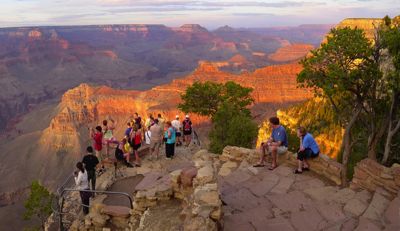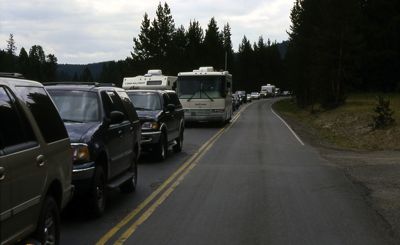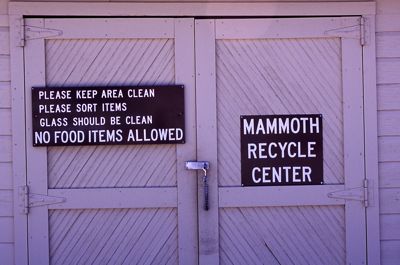
Parks must balance visitation, preservation
National parks attracted more than 280 million visitors in 2010.
As the public steps in and out of these parks, preservation for future generations is at risk. According to the National Parks Conservation Association (NPCA), action must be taken to ensure a balance between visitation and preservation in our national parks.
Great Smoky Mountains National Park brought in nearly 10 million visitors in 2010 making it the most visited national park in the United States. With this many people coming in and out of one park, finding a balance between preservation and visitation can be challenging.
| Click on the video at right to view a slideshow about national parks preservation and vistation narrated and prepared by writer Nicole Orchard. |
An important part to maintaining the national park system is raising awareness about the natural and cultural elements of the parks. This could also mean increasing visitation to reach that goal. However, there has been a significant increase in the number of people visiting the parks, especially in the summer months of July and August.
According to Bob Miller, management assistant at Great Smoky Mountains National Park, the months of July, August, September and October are the busiest months for them.
The annual visitation report provided by Miller shows at five percent increase in the number of people visiting Great Smoky Mountains from 2008 to 2009 but no increase from 2009 to 2010.
Although visitation is an important part of maintaining the stature of the national parks system, overcrowding and overuse can damage the cultural and natural aspects of the parks.
 |
At left, visitors come from all over the world to appreciate the picturesque landscapes that are 277 river miles long, up to 18 miles wide and a mile deep (Photos courtesy of the National Park Service). |
According to the Greater Yellowstone Science Learning Center, constant visitor activities and the transportation and infrastructure accompanying it have an effect on many resources including air and water quality, the natural soundscape, wildlife habitat, the spread of non-native plants, diseases, and organisms, and the preservation of archeological sites and other cultural artifacts.
“Wildlife harassment, resource damage—people walking, driving, and parking in non-designated areas, litter (yes, hard to believe in this day and age) are just a few concerns we have,” Yellowstone National Park Supervisory Park Ranger, Tami Corchero said in regard to preservation issues caused by visitation.
Some parks, including Great Smoky Mountains and Grand Canyon have taken action to sustain preservation while still maintaining the increasing customer base.
Miller said that Great Smoky Mountains paved all of the roads when it was built in the 1930s, in realization that there would be heavy traffic in and out of the park.
“Heavy use in the backcountry can have an impact on the trails. When the park was first created they realized that traffic was going to be heavy,” Miller said.
| At right, traffic jams are a regular occurrence during the summer months at Yellowstone National Park as it is the busiest time of year for the park. Next below, the Mammoth Recycle Center at Yellowstone National Park acts as a resource to keep the park clean. |  |
Grand Canyon implemented a shuttle bus system to transport visitors from the parking lots to the park itself. The buses run on natural gas and electricity, eliminating the air and noise pollution that accompany motor vehicles and corrosion from road traffic.
According to the National Park Service, many of the buses use compressed or liquefied natural gas, which is a much cleaner burning fuel. Riding the shuttles makes the visitors stay more enjoyable, while reducing pollution and decreasing traffic congestion, a problem many parks encounter.
At Yellowstone National Park, managers concentrate on education and law enforcement to maintain a steady balance between visitation and preservation.
“We try to educate the public on the rules and behavior that needs to be observed in order to protect the park’s resources,” Corchero said.
“We do this through a quarterly park newspaper, an extensive Website and interpretive ranger programs.”
However, there’s only so much law enforcement can do when the visitors greatly outnumber the park staff.
“The Law Enforcement Division does just that—enforces the law and issues citations for those visitors who break the rules. Unfortunately the number of visitors is much higher than the number of park staff, so many violations occur without any punishment to those responsible,” Corchero said.
One solution to this problem could be to enforce a quota system and monitor the number of people entering and exiting the park. That way, only a certain amount of visitors would be allowed in the park at one time and preservation would be less at risk.
 According to Cochero, Miller, and Tami Blackford, a writer-editor at Yellowstone National Park, neither Great Smoky Mountains nor Yellowstone has a quota system in place.
According to Cochero, Miller, and Tami Blackford, a writer-editor at Yellowstone National Park, neither Great Smoky Mountains nor Yellowstone has a quota system in place.
“We don’t even have entrance stations here. We have 14 entrances: Three main entrances and 11 smaller entrances. About the only thing in the park that does have limits on it are the backcountry shelters, especially on the Appalachian Trail. They’re really popular and they’re not that big. Otherwise, people can come and go as they please,” Miller said.
To assist the National Park Service in complying with the Government Performance and Results Act (GPRA), a visitor survey was conducted in units of the National Park Service system. The survey was developed to measure each park unit’s performance related to visitor satisfaction and visitor understanding and appreciation.
Ninety-nine percent of Yosemite’s visitors are satisfied overall with facilities, services and recreation opportunities and 100 perent of visitors understand the national significance of the park.
In the national parks people find something they enjoy, can identify with, and want to keep. Visitors understand the need for preservation and are complying with the methods parks are using to preserve their resources.

Comments are Closed